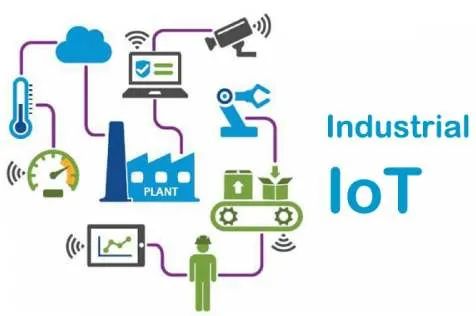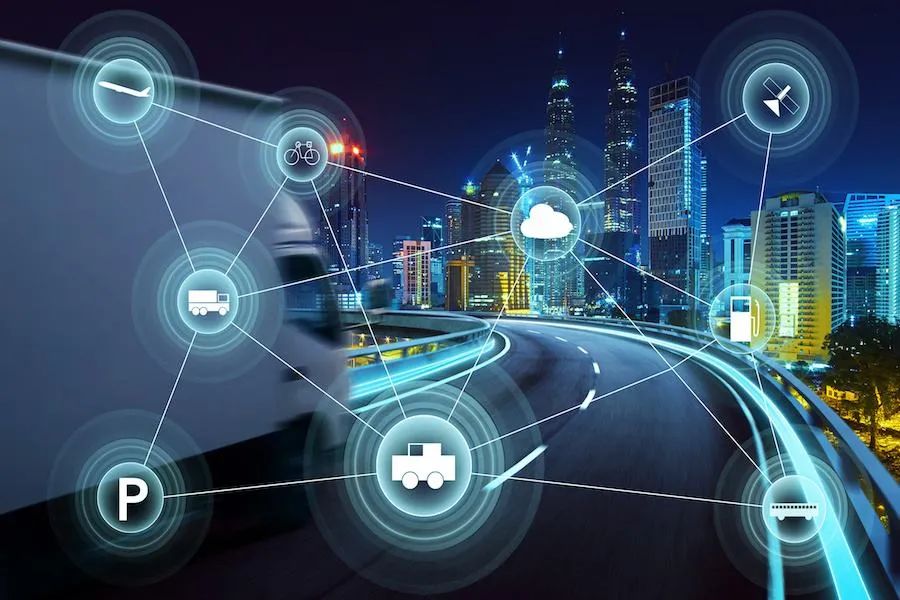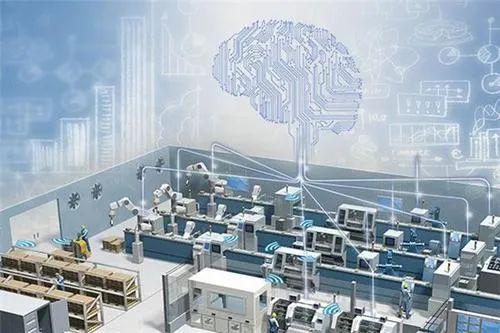The Internet of Things (IoT) provides a new way to improve processes across industries, making them safer and more efficient, from construction to mining to manufacturing.

Over the past decade, as data collection, storage, and analysis technologies have improved, data has become increasingly important for businesses. One of the most common advancements in industry over the last ten years has been the introduction of IoT, which has become central to the Fourth Industrial Revolution, also known as Industry 4.0.
The backbone of the Industrial Internet of Things (IIoT) consists of low-power sensors and internet-connected devices that can quickly collect data and transmit it to users, providing information for both day-to-day and long-term decision-making. By implementing these sensors, industry leaders can integrate internet technology with operational technology, significantly enhancing productivity.
From construction to mining to manufacturing, IoT offers a new way to improve processes, making industries safer and more efficient.
A report from Trend Micro, a U.S. data company, states that real-time data from sensors and other information sources aids in the “decision-making” of industrial equipment and infrastructure, providing insights and actionable steps. This report allows industries and businesses to identify errors or inefficiencies in the supply chain and address these issues immediately, thereby improving operational and financial efficiency. Proper integration of IIoT can also optimize asset utilization, predict failure points, and even automatically trigger maintenance processes.
In addition to sensors (such as artificial intelligence, machine-to-machine communication, and cloud technology), the Industrial Internet of Things encompasses a wide range of technological advancements.
Experts agree that as these technologies improve, the demand for IoT will increase. Predictions indicate that by 2023, the global smartphone market will reach $751.3 billion, with smartphone software growing the fastest. To understand why there are such high expectations for IIoT, let’s look at some of the top industries that will benefit.
The Industrial Internet of Things improves regulation and automation in the oil and gas sector.
Modern information technology solutions make it easier for leaders in the oil and gas industry to monitor their hardware, understand signs of failure, and reduce production costs.
It is well known that energy is an unstable industrial sector. Due to frequent fluctuations in oil and gas market prices, manufacturers face pressure to continuously improve collection and refining methods to lower costs and maintain productivity. Moreover, the collection and refining of oil and gas is a complex process that can have severe consequences if it fails.
Industry leaders such as Chevron, Exxon, Mobil, and Shell collaborate with technology companies to enhance services, from predicting equipment maintenance times to increasing drilling yields.
In fact, according to IoT expert and columnist Naveen Joshi, CEO of software company Allerin, IoT has benefited many areas of the oil and gas industry. Here are some examples: Drilling management: For companies drilling offshore or underground, it is challenging to monitor machines that could have catastrophic consequences if mishandled. By using IoT devices and IoT platforms, users can receive continuous measurements to minimize any margin of error and receive alerts before any impending drilling errors.
Pipeline monitoring: From both commercial and humanitarian perspectives, pipeline leaks are a significant issue in the oil and gas industry. According to the U.S. Department of Transportation’s Pipeline and Hazardous Materials Safety Administration, pipeline leaks have caused nearly 200 deaths and 900 injuries over the past decade, totaling $5.75 billion. By implementing IIoT sensors along pipelines, employees can closely monitor potential failure points to limit physical hazards, while the industry can reduce resources spent on continuous manual inspections through automation.
Increasing long-term revenue: The oil and gas sector is highly competitive, meaning businesses need to find areas to cut costs before they can continue operating. While short-term solutions may help businesses stay afloat, they can be detrimental in the long run. By investing in IoT, companies can collect data over the long term and use big data analytics to address inefficiencies. For example, using IoT sensors, organizations can monitor inventory levels across different geographical areas to improve supply chain management. Network sensors also help identify optimal drilling areas, with companies like ExxonMobil predicting that their daily production will increase by nearly 50,000 barrels by 2025.

Mining companies use sensors to enhance safety and efficiency.
The Industrial Internet of Things in the mining industry is still in a relatively nascent stage; however, industry leaders are already using information technology to create a safer and more efficient operational ecosystem.
Machines supporting IIoT can help optimize material and equipment processes, thereby improving efficiency and yield. “Equipment failures are predictable, and real-time monitoring enables complex decision-making and predictive maintenance strategies,” reports mining websites. Using smart optimization technologies, drilling and blasting can be optimized, improving mine and logistics scheduling.
With IIoT, you can monitor the efficiency of all steps in the extraction process, including automated drilling. According to Industrial Weekly, mining company Goldcorp is leveraging IoT to create AI-driven drills that can “detect materials and boundaries and are equipped with automated cutting guidance systems.” Meanwhile, Fortescue Metal Group has equipped a fleet of trucks with IoT sensors to notify supervisors when vehicles are not at maximum capacity and make adjustments accordingly, thereby increasing overall revenue.
These sensors can also enhance employee safety. At Goldcorp, IIoT sensors are embedded in miners’ helmets, providing real-time location updates in emergencies. Mining websites report that the increased automation of plant equipment and vehicles enhances safety, reduces costs, and keeps employees away from hazardous environments. Integrating IIoT technology into complete mining operations can increase return on investment by boosting throughput and reducing expenditures.
Manufacturers have greater oversight of the supply chain.
As manufacturers expand distribution channels to accommodate the global digital economy, visibility in supply chain management is crucial to ensuring customers receive quality products on time.
Sensors can also assist organizations in organizing warehouses to store products that meet the demands of geographical areas.
With the help of IoT, inventory can be automatically monitored and integrated into customer demand in specific regions; therefore, if you are a distributor in a certain area, you will be able to store the optimal amount of goods in your warehouse, as explained by production engineering solutions.
Through IIoT, employees can also monitor different components of their operations in real-time, allowing them to closely track the performance of products from start to finish.
According to Autem, tracking solutions supported by low-power wide-area (LPWA) networks, Bluetooth, GPS, RFID, and other technologies enable manufacturers to see the precise location of assets in real-time. Smart sensors embedded in products can provide accurate data on transportation conditions, such as temperature, humidity, and light, and issue alerts when damage occurs or thresholds are exceeded.
Utilities leverage smart grids to create energy-efficient smart grids.
John Geiger, Vice President of Business Development at software solutions company MACHFU, states that the monitoring processes utilities endure are “rooted in aging technology.” This leads to infrastructure dominated by traditional and proprietary systems, with reluctance to adapt to historically new standard-based open models that do not facilitate the development of modern distributed energy smart grids.
According to “Today’s World of IoT,” the introduction of IIoT in public utilities began with advanced metering infrastructure (AMI), a complex network of communication and data collection systems that “allows for two-way communication between customers, controls, and event data.”
Since then, with advancements in automation systems, smart grids in the utility sector have expanded to better control voltage regulation and energy distribution.
With smart grids, energy companies can restructure their management systems to adapt to smart grids, which deserve to be part of the 21st century. Continuous data streams from strategic location sensors ensure energy nodes operate at optimal capacity and are replaced as needed. This is especially true for companies engaged in renewable resources like wind and solar energy, as multiple sensors are required to measure the efficiency of each node and the related environmental conditions.
According to “Today’s IoT,” IoT promises to empower utility companies, enabling them to oversee communication between customer homes and workplaces. Through a unified global utility communication solutions approach, combined with utility companies’ lessons learned in security, privacy, and consumer interaction, utilities should embrace future uncertainties and lead in the information technology era.
Improving railway tracking and maintenance through integrated trains.
Trains are the backbone of metropolitan areas worldwide. In New York City alone, 1.7 billion people rely on the subway system each year. However, many cities and multinational railway systems are plagued by maintenance issues and poor levels of passenger service. However, new attempts at smart bus systems may provide solutions to some of the most common problems in this public transport service.
Traditionally, railway vehicles have been repaired through reactive, time-based maintenance schedules. In other words, if it’s not broken, don’t fix it. This passive approach to railway operations can lead to trains running for extended periods without proper inspection, and employees fail to consider factors such as usage frequency, resulting in inefficient travel, customer dissatisfaction, and, in some cases, tragic accidents.
At the Palo Alto Research Center (PARC), researchers are exploring ways to integrate IoT sensors into train cars and stations. As part of a new state management system, this system makes railway operations safer, timelier, and more efficient.

By introducing IoT sensors into circulating trains and combining IoT data dashboards to record and remotely monitor data, railway organizations can predict when trains need maintenance and begin preparing to service these vehicles.
Ajay Rajagopal, Executive Director of PARC Strategic Company, told the railway technology department: “Thus, railway companies are shifting from tunnel boring machines to this more predictive model. Before assets expire, (operations and management) teams may receive notifications a week or even a month in advance, allowing them to prepare schedules and resources to avoid critical trains going out of service and disrupting the system. For example, operators can receive data on the remaining useful life of assets a month or even six months before retirement, allowing them to plan for a major capital expenditure in advance.
This solution is not just for maintenance. The larger the network of interconnected devices, the more seamless the railway system becomes. Industrial IoT sensors can be used to measure train operating patterns on tracks, local environmental conditions, the geographical location of train cars, and passenger flow. All this information is used in management systems, opening the door to a holistic approach to railway management.
Construction enters the digital age with IoT.
According to a recent report from the World Economic Forum, despite the construction industry accounting for 6% of global GDP, it lags behind other industries in technology adoption during the Fourth Industrial Revolution.
The report’s authors note: “Most companies in many industries still primarily use manual methods to deliver traditional products and services and operate according to established practices and business models. As a result, productivity lags behind.
From heavy machinery to design and placement to worker safety, there are many moving parts on construction sites, but any useful data in these areas is isolated or not collected. When information technology is integrated into these different site components, the Industrial Internet of Things can have many impacts on the safety and productivity of construction sites. Jane Ren, CEO of Atomiton, wrote in Engineering News Record: “IIoT is digitizing the construction field with a multitude of sensors that can report all types of data—location, speed, vibration, fuel levels, safety/environmental hazards, raw materials, finished products, and work-in-progress—without traditional manual/paper data collection.”
One specific use case for IoT is the ordering of new materials, which can lag due to human error. If materials do not arrive on site in a timely manner, it can delay critical deadlines and financially hurt construction companies. With smart gauge sensors and artificial intelligence, new materials can be automatically ordered, reducing the likelihood of delivery delays due to employee oversight.
In general, IIoT sensors integrate a vast amount of moving parts on construction sites by aggregating data from many separate components. By doing so, site managers can easily monitor the entire project and ensure it stays on track.
Ren Zhengfei stated that digital construction can reduce project disruptions by increasing equipment uptime, quickly locating mobile equipment, and reducing idle time and unplanned downtime through predictive maintenance.
The use of IIoT is still in its early stages, with some industries advancing further than others. However, the Fourth Industrial Revolution is rapidly approaching, and information technology will only play a larger role, meaning it is time to invest.